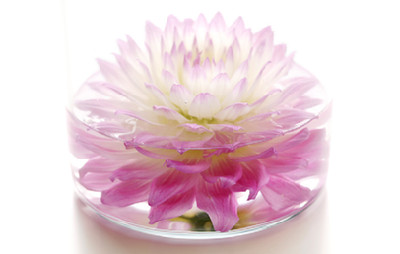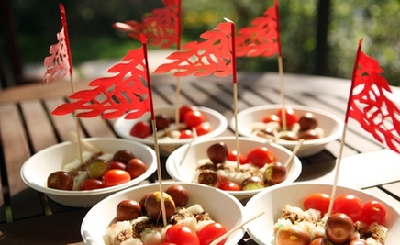
The flower was favored by poets through the ages, because it is one of the seldom flowers that bloom in late autumn. It is said that Tao Yuanming, a famous poet of the Jin Dynasty, grew many species of chrysanthemum while he lived as hermit and the flower, when in full bloom, drew many of Tao’s relatives and friends. Huang Chao, leader of the peasant uprising in the Tang Dynasty, wrote a lot of poems about chrysanthemum, which were compiled into an anthology of Chrysanthemum and, even now, are oft-quoted. Du Fu, a great Tang Dynasty poet, wrote more than ten poems singing the praises of the flower.
Chinese folks were fond of enjoying chrysanthemum on the Double Ninth Day long before. Chrysanthemum blossom in the ninth lunar month have a beautiful name of “flower of longevity”. The custom of wearing chrysanthemum appeared in the Tang Dynasty already and was always very popular throughout the time afterwards. The entrances of some taverns in the Song Dynasty (960-1279) were decorated with the flowers on the day, which was supposed to incite customers’ desire for wine. Chrysanthemum displays were usually held immediately after the day in some regions of China in the Qing Dynasty. People in Beijing began to stick the chrysanthemums on doors and windows to “get rid of the bad luck and bring in the good ones” which is an alteration of the custom of wearing Chrysanthemum on head. At these displays people might enjoy chrysanthemum flowers, take part in poem-composing competitions or watch painters drawing paintings of chrysanthemum flowers. The display was often lively with a sea of visitors.
Eating Double Ninth Cake
The Double Ninth cake is also known as “chrysanthemum cake” or “flower cake”. It dates back to the Zhou Dynasty (the 11th century – 256 BC). It is said that the cake was originally prepared after autumn harvests for farmers to have a taste of what was just in season, and it gradually grew into the present cake for people to eat on the Double Ninth Day.

The cake was usually made of glutinous rice flour, millet flour or bean flour. In the Tang Dynasty, its surface was usually planted with a small pennant of multi-colored paper and bore at its center the Chinese character “ling” (order). The Double Ninth cake in the Song Dynasty was usually made with great care a few days before the Double Ninth Day, its surface planted with colored pennants and inlaid with Chinese chestnuts, ginkgo seeds, pine nut kernels and pomegranate seeds.
